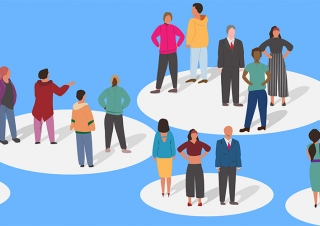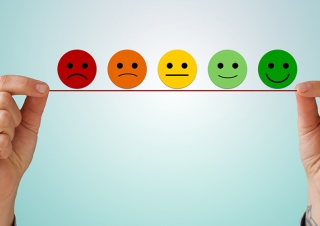Resources
Popular as ever, Medicare Advantage (MA) plans remain a hot priority for healthcare marketing execs. Months of planning and millions of dollars each year are devoted to wooing new members.
Between recent policy tweaks, regulatory shifts, and market transitions around Medicare Advantage (MA), the upcoming enrollment season will likely be a hectic one. In fact, the whirlwind is already gathering speed.
What’s a Medicare Advantage plan without an array of choice perks? These days, dental, vision, and hearing benefits are merely the baseline. Fitness benefits are a must and top-of-the-line extras like over-the-counter drug coverage, food delivery, transportation services, and in-home support are increasingly prevalent.
Rumors of print’s death have been greatly exaggerated. In an always-on world awash in digital tech, print can cut through the content clutter. Smartphones, tablets, and other devices may be rapidly multiplying, but printed marketing materials still win out when it comes to trust and engagement.
The moment has arrived: The pandemic-era provision that has allowed people to continuously remain enrolled in Medicaid has come to an end. With the return of annual state-by-state Medicaid redeterminations, between 8 million and 24 million people may lose coverage over the next year, according to estimates by the Kaiser Family Foundation.
In recent years, Medicare beneficiaries have had access to a smorgasbord of options — the greatest number of plans to choose from in a decade. And as their satisfaction ratings become increasingly weighted in the stars formula, it’s more important than ever that you help your plan stand out from the rest. Before this year’s AEP, take a long, hard look at where you’re at — and what you can do to optimize your content program to do what content does best: build awareness, deepen trust, and drive conversions.
There’s plenty we know about Medicare plan retention rates and the factors that drive people to stay or switch. (Though if you need a refresher on those drivers, we got you.)
Once upon a time, experts thought about health primarily in healthcare terms: doctor visits, hospital care, prescription drug coverage. Today, we know better.
“What keeps me up at night? Easy. Apple or Amazon figures out healthcare before we figure out consumerism.”
So said the chief marketing officer (CMO) of one of Linkwell’s national payor customers recently. It’s no secret that the healthcare sector is rapidly evolving, and competition is stiffer than ever. Consumer expectations are changing just as quickly. Consumers increasingly require a world-class customer experience from any brand they interact with — including their health plans — and they’re willing to shop around.
Call it the Great Health Care Paradox: Populations that are hardest to reach are often those who’d benefit most from the messages you’re trying to send.
So how do you actually connect the dots between hard-to-reach populations and health tools and services? Trying to solve population-specific challenges with a one-size-fits-all solution isn't the answer. But there are some hard-won insights to be shared when it comes to connecting with traditionally hard-to-reach groups and with the right content strategy, you can reach, deeply engage and motivate them to act as well.
Dazzling site copy, newsy social posts, well-written and snappy print materials. Sometimes great content can feel like a win in and of itself. But it’s what happens after that content hits your audience’s eyeballs that really matters.
A silver-haired man baking biscuits in an apron — and little else. A grandma throwing her walker into the pool. A gaggle of septuagenarians flipping the bird at the camera. This saucy TikTok video from the senior influencers at Retirement House is just 21 seconds long, but it’s raked in 15 million views. It’s also just one of many examples that obliterates the stereotype of tech-fearful older adults.
Which came first: The satisfied member or the highly rated Medicare plan?
Answer: Yes.
New research from GHG Advisors reveals how the two work hand in hand. Satisfied members grade plans favorably—driving up Star ratings—and plans with higher Star ratings have happier members and far lower switch rates.
In fact, says GHG, plans rated between 2.5 and 3.5 Stars have nearly double the switch rate of a 4-Star plan, 20% versus 11%. That number continues to fall at 4.5 Stars (9%) and 5 Stars (7%).
Let’s start with a cautionary tale—and, yes, it has everything to do with OEP.
You’ve just purchased the Bentley of home security systems: streaming video, motion-activated lights, a web of lasers that an intruder would have to shimmy under like you see in those heist movies, the works.
The monthly fee is hefty—and switching from your old provider was annoying—but as the sales guy said: Bentleys don’t come at Honda prices.
Month one: The thing never goes off. But why would it? You live in a safe neighborhood.
How’s this for an indefensible position: The 1918 Spanish flu was good for public health.
Yes, the pandemic hit a weak and weary global population just as World War I was ending, killing 50 million people worldwide. But it also changed healthcare forever—for the better.
The modern era of epidemiology was born, for example, as researchers raced to understand how infectious disease spreads person to person.
















